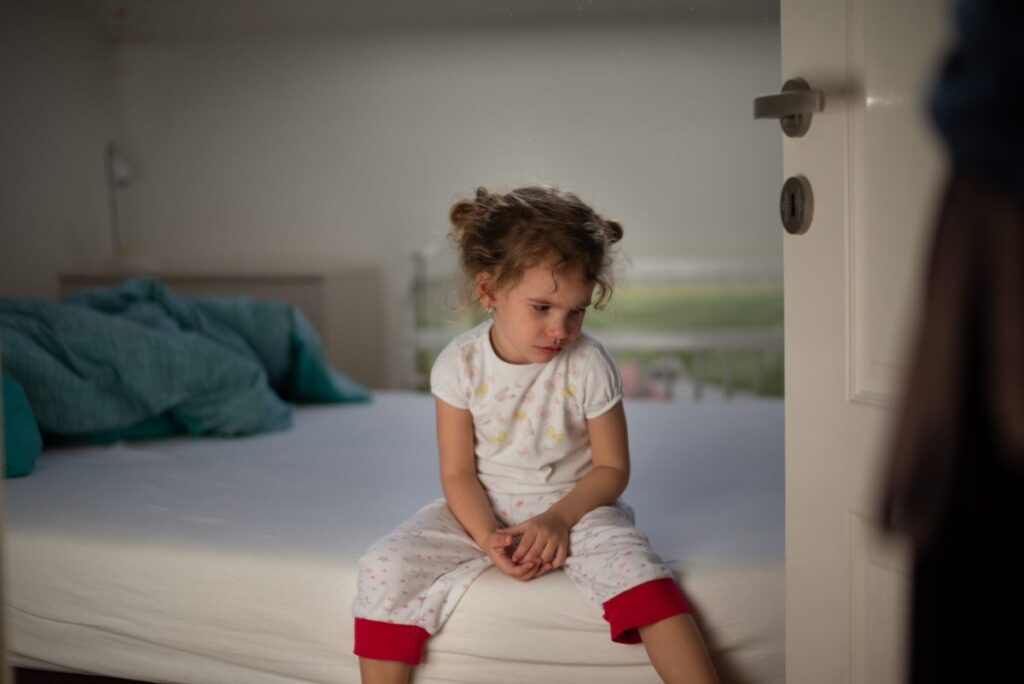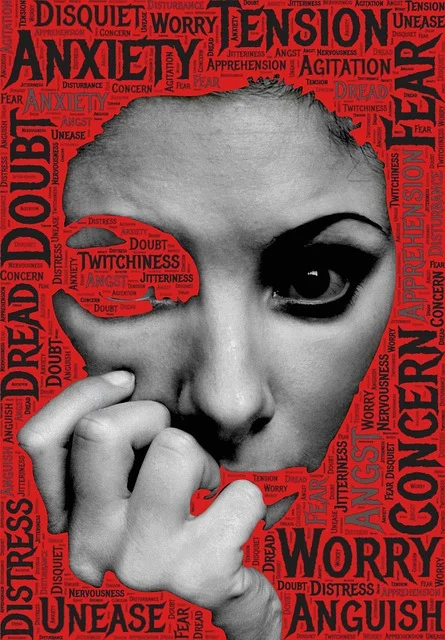Introduction
Attachment is the foundation of human relationships. From the first days of life, infants depend on their caregivers not only for food and shelter but also for warmth, trust, and emotional safety. Through consistent and nurturing care, children learn that the world is safe and that relationships can be trusted. But when this care is disrupted—through neglect, abuse, or unstable caregiving—serious difficulties can arise in how a child forms and maintains emotional bonds.

One of the conditions that can emerge from these experiences is Reactive Attachment Disorder (RAD). RAD is a rare but serious disorder that affects a child’s ability to connect with others in meaningful ways. Unlike children who are simply shy or independent, children with RAD struggle deeply to trust caregivers and may withdraw from relationships altogether.
In this article, we will explore what RAD is, its symptoms, causes, and how it affects emotional life. We will also answer common questions such as whether people with RAD can feel love, whether the condition can improve over time, and how it is treated.
What is Reactive Attachment Disorder (RAD)?
Reactive Attachment Disorder is a condition that occurs when a child does not form healthy attachments with caregivers due to severe early neglect, trauma, or instability in caregiving. It is classified in the DSM-5 under trauma- and stressor-related disorders.
Key features of RAD:
- Difficulty forming emotional bonds with caregivers.
- Withdrawal and avoidance of comfort, even when distressed.
- Limited emotional expression such as reduced smiling, laughter, or eye contact.
- Failure to seek comfort when upset, unlike most children who turn to a trusted adult.
How RAD develops
RAD arises when a child’s basic emotional needs are not met during critical stages of development. Common scenarios include:
- Severe neglect where a child’s cries for comfort are consistently ignored.
- Abuse from a caregiver that creates fear rather than safety.
- Frequent changes in caregivers, preventing stable bonds.
- Institutional care with rotating staff and little individualized attention.
Children need reliable caregiving to form secure attachments. Without this, they may come to view the world as unsafe and relationships as unreliable, leading to the emotional withdrawal that defines RAD.
What are the Symptoms of RAD?
The symptoms of RAD can vary but generally revolve around emotional withdrawal, lack of trust, and difficulty forming attachments.

Core symptoms include:
- Minimal social responsiveness: Children may avoid eye contact, rarely smile, or show little interest in play with others.
- Failure to seek comfort: Even when hurt or frightened, they may not turn to a caregiver for reassurance.
- Difficulty calming down: When upset, they may remain distressed for long periods without accepting comfort.
- Limited positive emotions: Joy, laughter, and affection are often absent or rare.
- Withdrawal from peers: Trouble connecting with other children or maintaining friendships.
Everyday examples caregivers may notice:
- A child falls and scrapes their knee but does not cry out for help or seek a hug.
- A caregiver offers comfort, but the child stiffens, avoids eye contact, or resists.
- The child appears emotionally flat, rarely smiling or showing enthusiasm.
- Teachers may observe a child sitting alone, uninterested in group activities.
Differentiating RAD from other conditions
It is important to distinguish RAD from other developmental or mental health issues:
- Autism spectrum disorder: Children with autism may also struggle with social connections but typically show repetitive behaviors and communication challenges that are not central to RAD.
- Depression: While both involve withdrawal, RAD stems specifically from disrupted attachment.
- Shyness: Shy children still seek comfort from familiar caregivers, while children with RAD may avoid all caregivers.
Recognizing these symptoms early is critical, as intervention is most effective in the early years.
Causes and Risk Factors of RAD
Reactive Attachment Disorder almost always stems from serious disruptions in early caregiving.
Primary causes
- Severe neglect: Caregivers consistently fail to respond to the child’s emotional or physical needs.
- Abuse: Exposure to physical, emotional, or sexual abuse undermines trust in caregivers.
- Institutional upbringing: Children raised in orphanages or group homes with little individualized care are at higher risk.
- Frequent changes in caregivers: Multiple foster care placements or caregiver turnover prevent stable attachment.
Risk factors
- Early separation from parents due to illness, incarceration, or death.
- Parental mental health disorders such as depression or substance abuse.
- Environments lacking emotional stimulation or affection.
Without consistent caregiving, children cannot develop the secure base necessary for healthy emotional growth, setting the stage for RAD.
Can People with RAD Feel Love?
One of the most frequently asked questions about RAD is whether affected individuals are capable of love. The short answer is yes, but it is often complicated.
Emotional capacity vs. expression
Children and adults with RAD have the innate human capacity to love and desire connection. What RAD affects is the ability to trust, express, and sustain that love in relationships. They may long for closeness but find it difficult to show affection or accept it from others.
How RAD impacts love
- Fear of rejection: Past neglect or trauma may make individuals wary of intimacy.
- Difficulty with trust: They may question the intentions of others, even in safe relationships.
- Struggles with affection: While they may feel love internally, they might not know how to express it in typical ways.
- Inconsistent relationships: Bonds may form but often feel unstable or strained.
Pathways to healing
With therapy, stable caregiving, and supportive environments, people with RAD can learn to express love more openly. Many develop meaningful, lasting relationships once they build trust and experience consistent care.
Does RAD Ever Go Away?
RAD does not have a simple cure, but with treatment and stability, symptoms can improve significantly over time.
Early intervention is key
- Children who receive treatment early have the best outcomes.
- Secure and stable caregiving environments can help reverse many symptoms.
- The brain’s plasticity in childhood allows for healing and new attachment patterns.
Long-term outcomes
- Without treatment: RAD symptoms may persist into adolescence and adulthood, leading to difficulties in relationships, emotional regulation, and trust.
- With treatment: Many children learn to form secure bonds, though some challenges may remain.
RAD in adolescents and adults
In older individuals, RAD may present as:
- Difficulty trusting partners or maintaining long-term relationships.
- Emotional detachment in friendships.
- Trouble with authority figures, such as teachers or employers.
While RAD does not always completely disappear, its impact can be reduced through therapy and supportive relationships.
How is RAD Treated?
Treating RAD requires a comprehensive approach focused on building trust, stability, and healthy attachment patterns.
Therapeutic approaches
- Attachment-based therapy: Helps children develop trust and emotional bonds with caregivers.
- Play therapy: Provides a safe environment for children to express feelings and practice connection.
- Family therapy: Supports caregivers in responding effectively to the child’s needs.
- Trauma-informed therapy: Addresses past experiences of neglect or abuse that continue to affect the child.
Caregiver involvement
- Caregivers play the most important role in treatment.
- Consistent, nurturing, and predictable responses help the child learn trust.
- Parent education and support groups can be invaluable.
Building a stable environment
- Regular routines provide security.
- Warmth and patience encourage emotional growth.
- Over time, repeated positive interactions help the child internalize trust.
Prognosis
With treatment, many children improve greatly, developing healthier relationships and greater emotional expression. For some, difficulties may persist, but therapy and supportive caregiving can significantly reduce the severity of symptoms.
Living with RAD: Real-Life Examples
Understanding RAD is easier when we imagine how it plays out in everyday life.
For children
- A child with RAD may avoid sitting in a parent’s lap, preferring to sit alone.
- They may fail to run to a caregiver after a long separation.
- Teachers may notice a lack of participation or interaction with peers.
For caregivers
- Parents may feel rejected when their child resists affection.
- Caregivers may struggle to bond, feeling that their efforts are not reciprocated.
- Patience, therapy, and education are often needed to navigate these challenges.
For adults with RAD history
- An adult may crave close friendships but push people away when they get too close.
- They may feel emotionally distant in romantic relationships.
- Therapy can help them recognize these patterns and work toward healthier connections.
Conclusion
Reactive Attachment Disorder is a complex but important condition rooted in early caregiving disruptions. Children with RAD show emotional withdrawal, difficulty seeking comfort, and struggles with forming bonds. While this can be painful for caregivers, understanding the condition is the first step toward healing.
People with RAD can feel love, though they may struggle to express it. With early intervention, stable caregiving, and therapy, many children improve significantly. While RAD may not always “go away” entirely, its impact can be reduced, allowing individuals to develop healthier, more trusting relationships.
At its core, treatment for RAD is about restoring what was disrupted in early life—the ability to trust, to connect, and to love. With patience, support, and professional guidance, children and adults with RAD can build the meaningful relationships they deserve.



